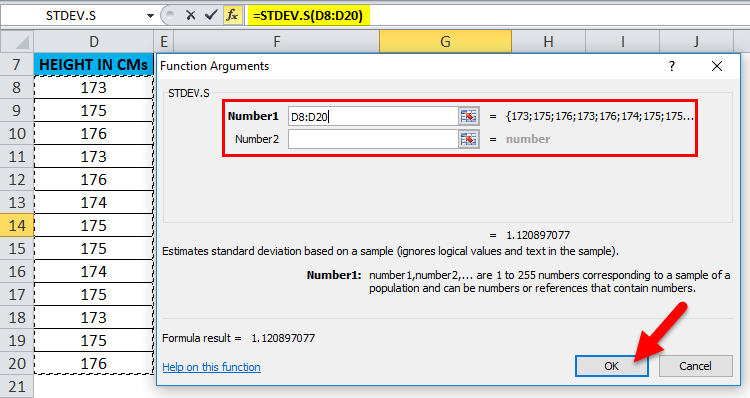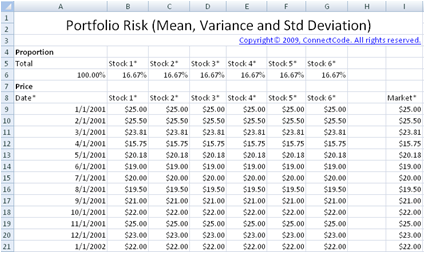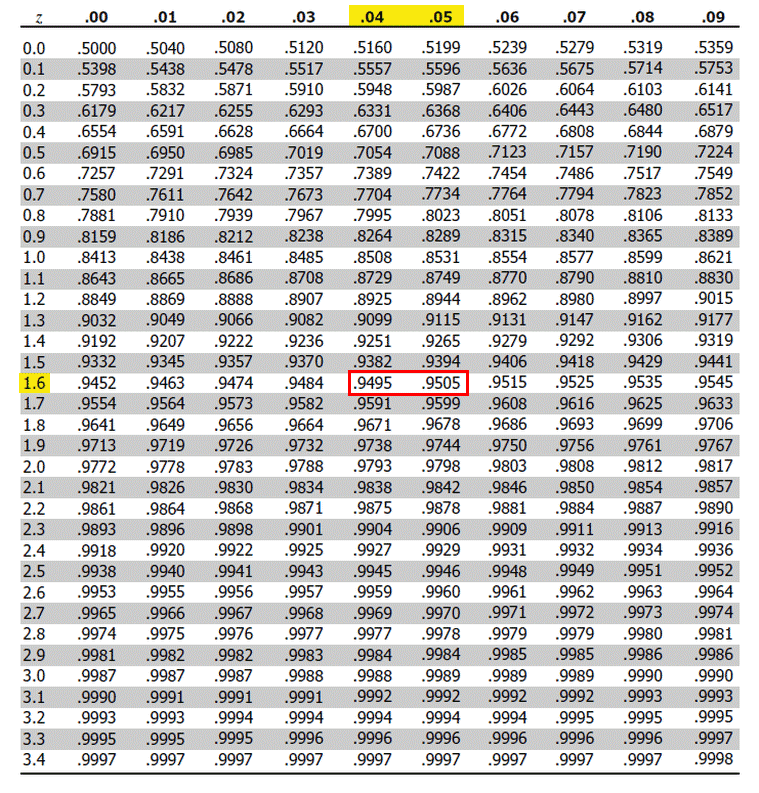
50 18-yr olds, 40 19-yr old, etc etc).Īutomated approaches to that would be interesting as its own question. More realistically than that even, you might assume that even that distribution skews younger (e.g.
#Mean and standard deviation excel code
your sample seems to skew younger) and convert each age band into its own distribution.įor example, instead of assuming 203 respondents are age 22 (as is done in the code above), you might assume 25 respondents each are 18, 19, 20. More sophisticated estimation techniques might try to account for skews in data (e.g. RECODE age (1=22) (2=30) (3=40) (4=50) (5=60) (6=70) (7=80). It is necessary to add all the numbers in the set and divide the sum by the number in order to find the arithmetic mean. To the extent your categories are not uniformly distributed (and from your image they don't appear to be), your estimate of the mean will also be off. The downside is that you will be underestimating the standard deviation (clumping data together tends to do that). The results will be as follows: This is the simple formula that was used: AVERAGE (B2:E2) Standard deviation, by its definition, shows the dispersion of a set of data relative to its mean. The simplest way would be to assign an age to each band (say, the mid-point) and summarize on that. As you are probably aware, the mean is average in Excel, so we are going to use an average formula to get the mean results for the distance covered. There are a few different ways you could estimate, depending on how sophisticated you'd like to get. Now we need to calculate mean and standard deviation in excel Standard Deviation In Excel The standard deviation shows the variability of the data values from the mean (average). The standard deviation for the list will appear in the cell you selected.Since your data is categorical, there isn't a way to calculate the "true" sample mean and standard deviation of respondent age. The Cumulative Normal Distribution function is given by the integral,from - to x,of the Normal Probability Density function. Once you have entered the range for your list, click on OK at the bottom of the dialog box.

Instead of typing the range, you can also move the cursor to the beginning of the set of scores you wish to use and click and drag the cursor across them. Enter the scores in one of the columns on the Excel spreadsheet (see the example below).

For example, if your data were in column A from row 1 to 13, you would enter A1:A13. Calculating the Mean and Standard Deviation with Excel. After you have made your selections, click on OK at the bottom of the dialog box.Įnter the cell range for your list of numbers in the Number 1 box. (Note: If your data are from a population, click on STDEV.P). Select STDEV.S (for a sample) from the the Statistical category. Place the cursor where you wish to have the standard deviation appear and click the mouse button.Select Insert Function (f x) from the FORMULAS tab. The mean (average) for the list will appear in the cell you selected. For example, if your data were in column A from row 1 to 13, you would enter A1:A13. If a data set had more than one mode, Excel would only display one of them.)Įnter the cell range for your list of numbers in the Number 1 box.

(Note: If you want the Median, select MEDIAN. Select AVERAGE from the Statistical category and click OK. Select Insert Function ( f x) from the FORMULAS tab. After the data have been entered, place the cursor where you wish to have the mean (average) appear and click the mouse button.



 0 kommentar(er)
0 kommentar(er)
